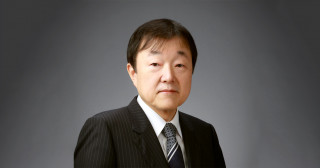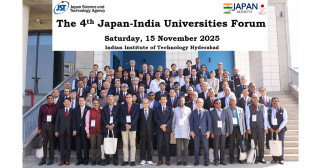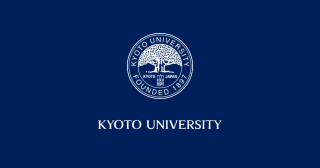On 8 March, the Asian Development Bank (ADB) signed a memorandum of cooperation to fund the "Pilot Study for Carbon Sequestration and Monitoring in Gundih Area -- Central Java Province, Indonesia", which will be carried out by a team led by Professor Toshifumi Matsuoka of the Infra-System Management Unit, Kyoto University Center for the Promotion of Interdisciplinary Education and Research (C-PIER), under the Science and Technology Research Partnership for Sustainable Development (SATREPS). Parties to this agreement include Indonesia's Pertamina (State Oil and Natural Gas Mining Company) and Ministry of Energy and Mineral Resources, the Japan Science and Technology Agency (JST), and the Japan International Cooperation Agency (JICA), the last two of which jointly operate SATREPS initiatives.
Coming after the successful conclusion of a feasibility study, conducted with funding from ADB in accordance with a memorandum of understanding signed June 2013, as well as months of preparation for the pilot project, the signing of the MoC represents the next crucial step toward the first full-scale implementation of carbon capture and storage (CCS) operations in the whole of Southeast Asia.
Natural gas production in Indonesia has traditionally involved substantial emissions of carbon dioxide (CO2), a greenhouse gas (GHG), into the atmosphere. If effectively deployed, technologies for separating and capturing atmospheric CO2 and storing it underground could help gas-producing countries such as Indonesia contribute to the reduction of global GHG output as well as offering tools for environmentally friendly gas field development, potentially leading to greater energy security for all countries concerned, including Japan.
Toward these goals, and with full support from Pertamina, Prof Matsuoka and his team have been working with Indonesia's Institut Teknologi Bandung (ITB) and other research entities to evaluate and select underground sites suitable for use as CO2 reservoirs, and develop conceptual designs for above-ground capture and storage facilities. ADB has agreed to provide funding to organizations involved in gas production, including Pertamina and Indonesia's Ministry of Energy and Mineral Resources, to help with the procurement of such facilities, which are to be used to capture atmospheric CO2 and inject it into the ground via a well, called Jepon-1, owned by Pertamina. In addition to facility construction and carbon sequestration, the project will involve several different types of surveys to monitor the stored CO2.
Its final goal is to develop a Standard Operating Procedure (SOP) for CCS and to promote it to relevant organizations.
The Gundih project is drawing widespread attention as the first CCS project to be implemented in Indonesia.
Background and goals
International efforts are underway across the world to reduce CO2 emissions to achieve the targets announced at the 21st Session of the Conference of the Parties to the United Nations Framework Convention on Climate Change (COP21), held in December 2015.
In Indonesia, one of Japan's traditional allies and major energy suppliers, large quantities of industrial GHG continue to be released into the atmosphere due to a lack of CO2 regulations. In addition, the country currently lacks the technological capability to capture CO2 emitted during gas production, resulting in a great number of CO2-rich gas fields left undeveloped.
In contrast, Japan has extensive knowledge and experience regarding CO2 management, accumulated through the years of research and tests conducted under the initiative of the Ministry of Economy, Trade and Industry. The Gundih project aims to transfer these resources to Indonesia, which shares a number of geological features with Japan, including being located in a tectonic belt, and to pave the way for full-scale CCS operations in the Southeast Asian country by providing the necessary equipment and training.
Project details
The primary objectives of the pilot project are to establish a method for identifying geologically and geophysically sound underground sites for CO2 storage, and to develop and deploy procedures for monitoring the behavior of stored CO2. At the same time, the project team will work on the methods for separating, capturing, and injecting CO2 into the ground, as well as addressing relevant considerations, including risk analysis, regulations, and social acceptability. Finally, based on the results of these efforts, the team will aim to establish and disseminate a CCS SOP.
Specifically, the first objective -- developing the method for evaluating potential CO2 reservoirs -- will involve geological analysis, laboratory rock experiments, and simulations, while the second -- establishing a subsurface CO2 monitoring system -- will entail the development of equipment and procedures for seismic refraction surveys, electromagnetic surveys, gravity surveys, and microearthquake observation, as well as techniques for analyzing and interpreting the results obtained. These surveys will be used in combination with each other to achieve dynamic and continuous monitoring of CO2 before and after injection into the ground. The equipment needed will be donated to Indonesia, and training will be provided to ensure optimal utilization.
The planned CCS site is the Central Processing Plant (CPP) of the Gundih gas field, Central Java, where natural gas production commenced in 2014. The gas processed at this plant contains 20% CO2, resulting in 80 tons of the GHG being emitted per day. In the pilot project, some of this atmospheric CO2 will be captured, liquefied, and transported to the Jepon-1 well, located some 22 km from CPP, to be injected into the ground and kept there for two years.
Project partners in Japan include Kyoto University, Waseda University, Kyushu University, Akita University, Fukada Geological Institute, and Japan Petroleum Exploration Co Ltd (JAPEX), the latter having extensive expertise in CCS. The work will be carried out in partnership with Indonesian universities and research institutes, including ITB, with support from Pertamina, which owns the Gundih gas field.
FY2016 plans
The SATREPS CCS project will run through FY2016. During this 12-month period, baseline studies will be conducted for a seismic refraction survey, the key component of the subsurface CO2 monitoring system. In addition, preparations will be made for the gravity survey and microearthquake observation, which are needed to achieve continuous observation of underground CO2.
Based on the results of these endeavors, the project team will then work on drafting an SOP to promote CCS operations in Indonesia, while continuing with its technology-transfer and training efforts.
With funding from ADB, the team will also work on designing and constructing surface facilities for CO2 injection, which are targeted for FY2017 implementation.
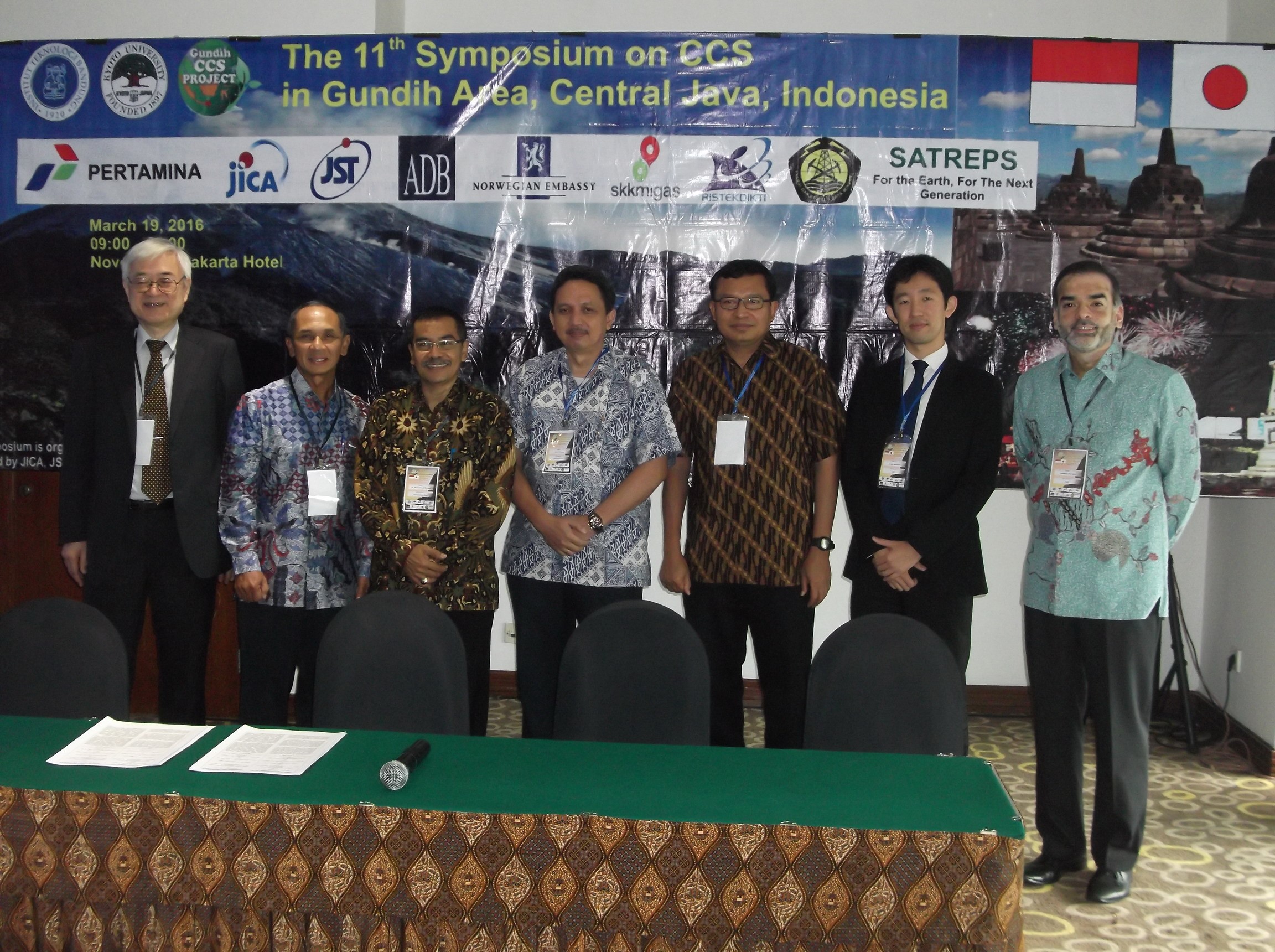
Signing ceremony
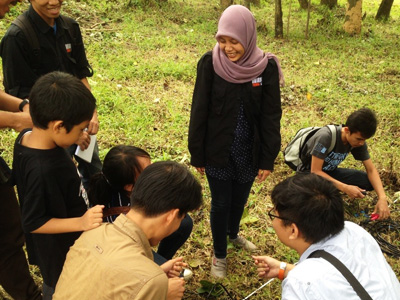
Equipment training at ITB, provided as part of SATREPS
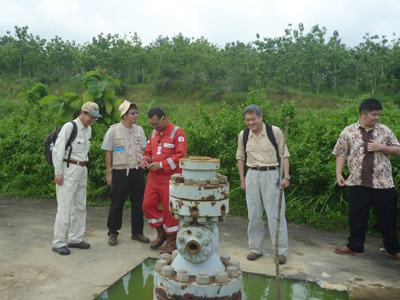
Jepon-1, the planned site for CO2
injection
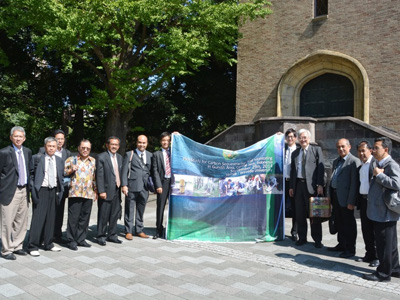
Participants in the Gundih project
symposium, held in September 2014 at the Okuma Auditorium, Waseda University
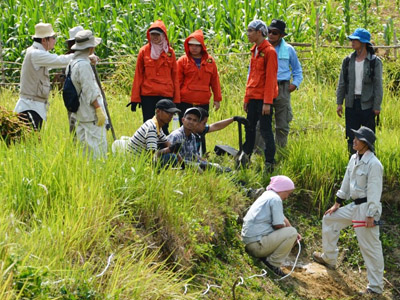
Baseline electromagnetic survey
conducted near Jepon-1 in August 2014
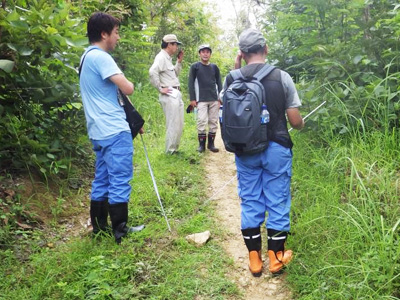
Geological survey conducted January 2016
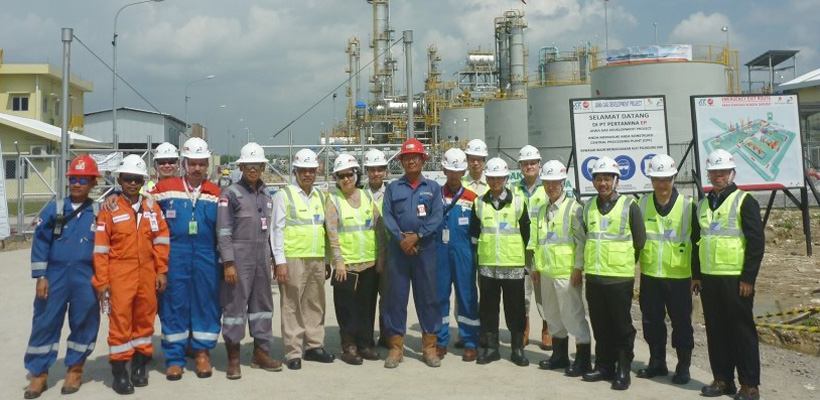
At CPP, the source of the CO2 to be sequestrated


